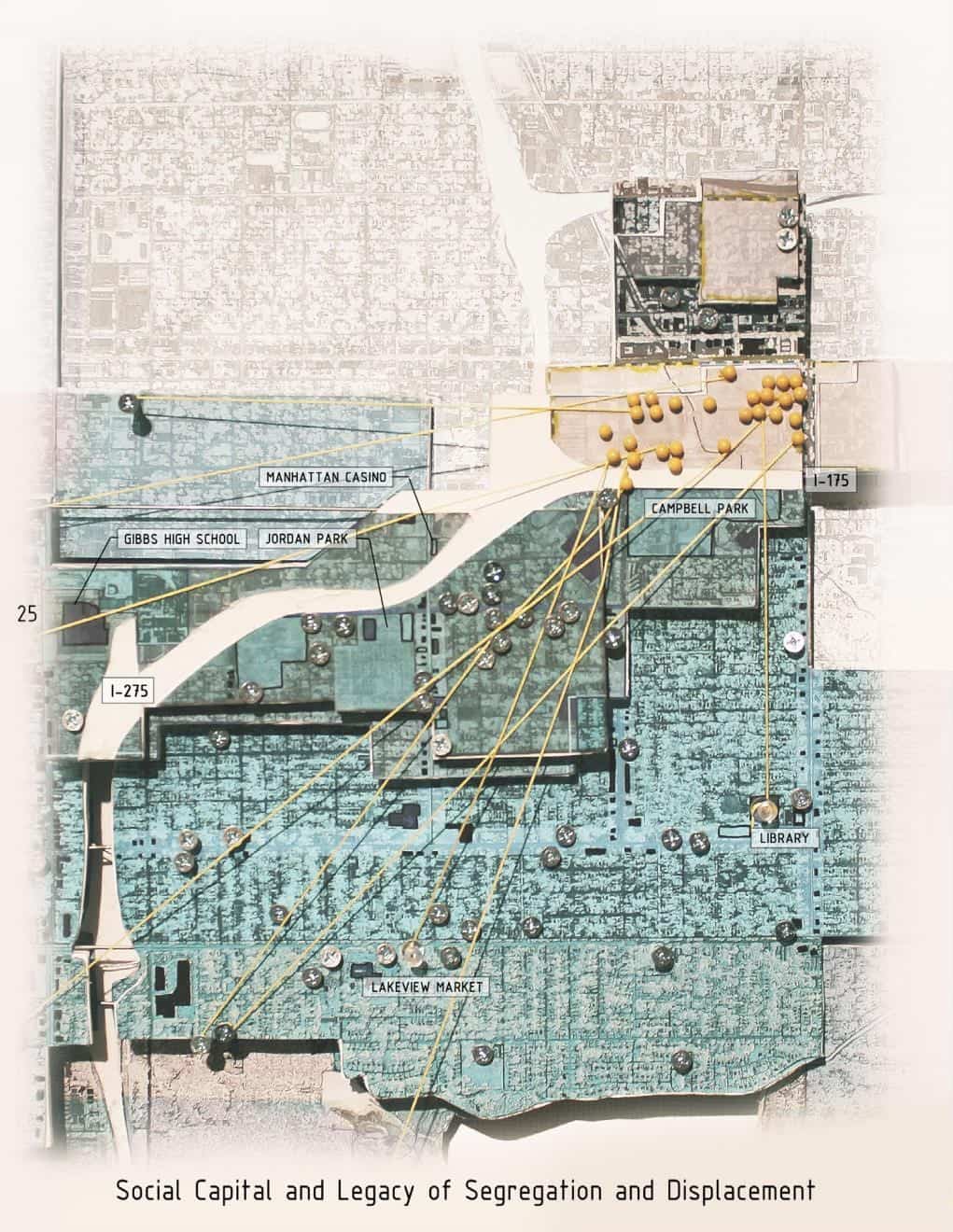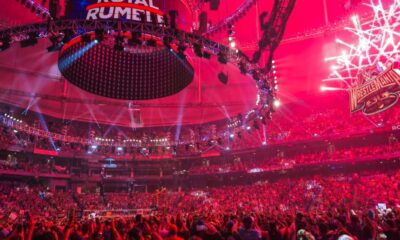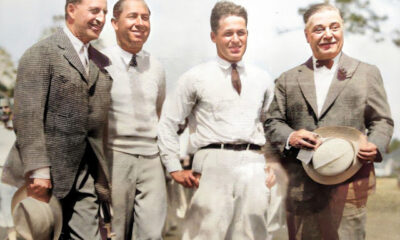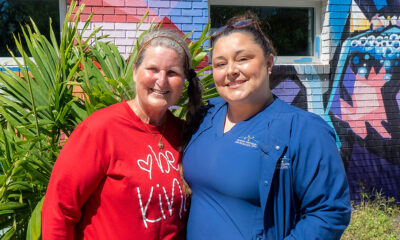Insight
Community Voices: Where have all the mangoes gone?

Welcome to the Catalyst’s Community Voices platform. We’ve curated community leaders and thinkers from all parts of our great city to speak on issues that affect us all. Visit our Community Voices page for more details.
In 1986, Tropicana Field was commissioned without a prospective tenant or any interest from a major league baseball team, and failed to attract a baseball tenant until eight years after its completion in 1990. As an emerging architect, I found myself asking, “What was the rush to build a taxpayer-subsidized $138,000,000 baseball stadium in this location?” What I came to understand is that the real story is not about baseball, it’s about people. In the Fall of 2018, I embarked upon an eight-month-long study of the site for my master’s thesis at the USF School of Architecture and Community Design, identifying the issues posed by the site’s historical context to propose policy suggestions and design solutions to mend the tear in the physical and social fabric of St Petersburg left by the 86-acre site.
Architects typically consider context in the preliminary stages of design. This encompasses what immediately surrounds the site and what existed before on-site. In my research, I read articles about the Gas Plant neighborhood, which previously occupied the site, and gathered that there had been controversy surrounding the sequence of events that led to the construction of the stadium. My research led me to Rosalie Peck and Jon Wilson’s St. Petersburg’s Historic African American Neighborhoods and St Petersburg’s Historic 22nd Street South, which immediately captivated me by so eloquently bringing to life the memory and the voice of the Southside St. Petersburg community. These writings provide personal accounts, chronicling our sometimes-difficult history with honesty, humanity and compassion, putting into prominence what the Gas Plant neighborhood meant to its community and what was lost when it was razed. I was shocked to uncover how far the history of this event could be traced, back to the 1930s, when racial segregation in St. Petersburg became a matter of policy.
The first African Americans settled three neighborhoods in St. Petersburg in the late 19th century, before the town had a name. As a result of the Great Depression, the HOLC (Home Owner’s Loan Corporation) drafted “Security Maps”; more commonly known today as redlining maps, which developers, realtors, tax assessors, surveyors and municipalities accessed to assist in devising strategies for economic recovery. These maps identify the three historic African American neighborhoods which no longer exist today: Peppertown, Methodist Town and the Gas Plant. These were deemed as “hazardous” due to their demarcation as African American neighborhoods.
The compilation of these maps resulted in the city’s 1935 “Proposed Negro Segregation Project” which was published in the St. Petersburg Times on Dec. 19, 1935. This map provided a legal description as to where African Americans should be relocated, in order to improve Downtown’s image. The implication was that those three historic neighborhoods would need to be displaced. Peppertown (east of the Tropicana Field Site) disappeared in the 1940s when its residents were relocated to Jordan Park, a newly constructed social housing community which existed within the confines of the “Segregation Project.” Methodist Town’s residents were mostly relocated in the 1970s under the guise of community redevelopment, and the Gas Plant neighborhood followed, severed from its community by I-175 in 1980 and fully demolished by 1986.
Through a series of community interviews, I determined that there exists a perceived disparity in the way the city and its architects have approached the future development of the site and the expectation from the Southside community, many of whom recall the sting of displacement and the city’s past broken promises. More than 500 households, 30+ businesses, 13 churches and other culturally significant institutions occupied the site prior to its destruction in the 1980s. Properties were purchased through the city’s exercise of eminent domain, in return for a promise of community redevelopment, which included jobs and housing. Instead, an entire community was displaced to make way for a stadium and an enormous parking lot, neither of which have delivered the promised community development. More than just buildings, what was taken away was the community’s sense of historic belonging to that place.
I produced a series of original analytical drawings which put into evidence the problematic nature of the site within its greater context, as well as a seven-foot-long model of the city. What is strikingly apparent when viewing these analytical instruments,is the tear in the urban fabric left by I-175 and I-275, cradling the 86-acre site, which itself is an enormous void. A void in a fabric is an abstract concept yet what it can be reduced to, in more tangible terms, is that the void is a physical or spatial barrier. It is an interruption of the connectivity, or fluidity of movement, within a city, be it pedestrian or vehicular.
The masterplan proposals currently put forward by the city and its architects have given the name of the proposed development as the Gas Plant District. Although the name was given to the neighborhood in the past, it was done so because the gas plant was the economic interest the city had with the neighborhood, and says very little about the people who called it home. In my interview with Rev. Watson Haynes, President of the Pinellas County Urban League and an accomplished community leader, he shared some of the names of the different enclaves which existed within the Gas Plant neighborhood in which he grew up: Cooper’s Quarter’s, Founder’s Court, Lilly Court, Forty Quarters, the Hollow, Lincoln Court, Jamestown, Little Egypt and Sugar Hill. In my proposal, I chose to name the new development “Sugar Hill” because of Rosalie Peck’s impassioned memory of it. It was located just north of Campbell Park, where I-175 currently resides.
“It was a neighborhood within a neighborhood, and its few gracious dwellings represented aspiration and attainment. In majestic stone mansions, stately brick dwellings and well-kept bungalows lived the elite society of St Petersburg’s influential black families, and the area was the pride of St. Petersburg’s African American Population … On that paved and lighted roadway lived doctors, funeral directors and educators. They served as role models for children and even younger adults striving to make their way – who often lived in lesser circumstances just a short walk away …” (Peck & Wilson, 2008)
What is in a name? If we were to call the new development the Gas Plant District, I would argue that the only conclusion one would draw from the name is that there used to be a gas plant on the site. The gas plant polluted the neighborhood and Booker Creek, where children used to swim. The Gas Plant was adjacent to the infamous city stockade, where African Americans were jailed. These are not the memories we should be celebrating. If the new development were to be named Sugar Hill, for example, quite a different conversation would occur. We could talk about the pioneers of St. Petersburg’s African American community who fought an oppressive system, or about the Harlem Renaissance, which inspired the names of Sugar Hill and the Manhattan Casino on 22nd St S. We would have a conversation about “ordinary people doing extraordinary things.” (Peck & Wilson, 2008)
I propose that the best way to honor our difficult past is to acknowledge it and move forward with a plan which aims to repair the damage inflicted upon Southside St. Petersburg’s African American community. Considering the extent of the city’s past efforts at displacing African Americans from their historic neighborhoods, striving to remove their visibility from Downtown, the solution should devote equal effort to the re-integration of the Southside community onto the site. Mrs. Daisy Swinton, owner of the Lakeview Market on 22nd Ave. S., had her store and home in the Gas Plant neighborhood before she was made to relocate. Hers is the only business I could locate today, still in existence from that time. She clarified to me that the significant damage to the community was economic. The Gas Plant neighborhood was the “downtown” of the Southside community when they were denied access to Downtown St. Pete. Many locally owned businesses were passed down from generation to generation and failed to thrive when removed from their context. The site was not devoid of its own issues, and its residents were open to the idea of redevelopment to benefit their community. I offer that it is not too late to deliver on that promise.
“One must maintain their connection with the past, yet ceaselessly pull away from it” – Gaston Bachelard
Arguably, gentrification is the central issue the community faces with this promised development. It’s a hot button issue, but it shouldn’t be. Gentrification is a problem that takes root in the inequality of one population to another. Without this social and economic inequality, there is no gentrifier and no gentrified. Once we acknowledge that the economic legs, upon which the local African American community stood in the 1950s and 1960s, have been severed through repeated bouts of economic violence, we can have a fruitful discussion on the potential benefits and harm caused by new development. There is not one recipe to combat gentrification, but the main ingredients are quality affordable housing and jobs.
The community needs a stake in the development, and I propose that this end be achieved through a combination of policy and design features, elaborated upon in detail within my thesis. Program and density are key. The site needs to provide varied scales of mixed-use programming so that people can work and live on-site and, most importantly, it needs to be a mixed-income neighborhood. Rather than building isolated affordable housing units, which ultimately reinforce the stigma that exists around poverty, we need to rethink our approach and begin to integrate affordable housing with moderate-income housing and higher-income housing. Our neighborhoods are economically segregated, and I propose that St. Pete boldly embrace forward-thinking policies which will benefit not only the African American community but the community at large by creating a mixed-income neighborhood in the heart of its city. This development needs to be about inclusivity.
“On a square, citizens are not connected to manifestations of nature, but to the heart of urban culture, history and memory.” (Levy, 2012)
Tropicana Field is an iconic building within our urban landscape, so it needs to be replaced with iconic development, not more of the same. The new development has the potential to become a bookend to downtown; one that celebrates its people. St Petersburg lacks a large-scale urban plaza. Currently, its residents gather at Straub Park for large scale events, however, it is a park and was not designed to accommodate large crowds. Traffic congestion and lack of parking are issues on the edge of the water.
In contrast, the Tropicana Field site resides in the heart of St Petersburg, on the threshold of the downtown arts districts and diverse residential communities, offering a perfect opportunity for the placement of a large public plaza. The public plaza unifies its people. It is the city’s living room, a democratic space, and through infusing the site with the proper programming as outlined in my thesis, we can create a synergy between the uses on the site which will celebrate our local culture and showcase who we are and who we want to be. The site can welcome large industry, if it makes room for local businesses on the ground, and a convention center and hotel which would provide jobs and a steady stream of visitors and patrons to the locally owned businesses on the site. We can connect St. Pete’s successful (and increasingly unaffordable) small storefront corridor on Central Avenue to the re-emerging small business corridors on 16th St S and 22nd St S. The site can become a link, rather than a barrier. Since the city owns much of the land, it can impose certain requirements as part of the site master plan which prospective developers and architects will be required to abide by, thus ensuring that the site becomes, and remains, inclusive.
I was invited to present my work to the city development team, who were receptive to these ideas. Our city leadership today is open to new ways of thinking, which gives me hope that we can be the city that gets it right. As the mayor likes to say, “the sun shines here,” so let’s all work together to ensure that it shines on all its citizens moving forward.
I will close with Rosalie Peck’s words, as they have inspired the entirety of this work. She wondered in her last chapter “Where have all the mangoes gone?”
“Everywhere were wonderful fruit-bearing trees that seemed to belong to no one and to everyone. It was a time when South-side children enjoyed access to an endless abundance of hunger-chasing, gut-filling, taste-bud satisfying fruit from trees of unlimited kindness. Merciful shade-bearing trees sagged heavy with guavas, avocados, oranges, grapefruit, tangerines and lemons, always present for the picking….
Positive role models of old were recalled as being as plentiful as fruit-bearing trees. Revered in memory are parents, relatives, principals, teachers, coaches, preachers, friends, neighbors, professionals in multiple fields and ordinary people doing extraordinary things…
St. Petersburg today is nearly bereft of mangoes and other cherished fruit trees from neighborhood yards, but the city today is still wealthy with a continuing supply of the soul-sustaining fruit of the human spirit.” (Peck & Wilson, 2008)








S. Rose Smith-Hayes
November 13, 2019at7:39 pm
Change is not always bad, however it is when it is based on lies. The City Administration lied to the people, moved them, destroyed their homes and businesses and never intended for them to return. As of today, they continue to ‘take’ and destroy the African American neighborhoods. I had family members displaced by the ‘promises’. Mrs Grayson died of a broken heart because she was promised to get her business back and it never happened, She owned ‘Bill Grayson’s’, a local bar and restaurant downstairs and she lived upstairs. Mr. Grayson had passed.
Jessica Horne
August 13, 2019at8:15 am
Thank you for sharing so poignantly written an article that equally informs and inspires.
I second the above suggestion for the author to embark on a writing career.
As to the content, while I might not agree on all bullets, I find it more noteworthy that this piece provokes thought on the topic at hand.
Danny White
August 12, 2019at11:18 am
This is one of the most BRILLIANT research papers I have ever read! As a child reared by one of the great African American civil rights leaders in Saint Petersburg, I fully appreciate this unequivocally well-balanced and comprehensive work by Ms. Vatelot. I personally hope that she will be a pivitol contributor to the redevelopment of the Tropicana Field site. FRESH vision is essential in helping to heal the deep and festering wounds caused by the blatant and unchecked systemic racism spanning the 1930’s to the 1980’s in the city of Saint Petersburg, Florida.
Shaquille Lashley
August 10, 2019at10:06 am
Wonderful story. Thank you for trying to make the City and world a better place. I so truly hope the 175 and 375 gets razed. It really separates Historic Uptown, Historic Roser Park, Campbell Park from downtown. Turn the 2 highways into urban boulevards. 16th street corridor will in turn become like MLK st (9th st) and 4th st with new businesses and it will revitalize the blighted areas of Methodist Town and my neighborhood of Historic Uptown.
H N
August 10, 2019at8:13 am
The pictures you painted with your words and the words of others are beautiful. I hope that we (the city, the citizens and businesses alike) invest in the development of Sugar Hill and build this important connection. Thank you for the historical perspective, as well. While the facts are uncomfortable, understanding how we got here is invaluable. Only by following its roots do we get to the heart of the tree.
Les Lloyd
August 10, 2019at5:22 am
What a thoughtful and insightful piece with great ideas for the redevelopment of the Tropicana Field site. I’d love to read the entire thesis.
Joe Hamilton
August 10, 2019at2:31 pm
Hi Les – there is a link to the thesis in the article.
Linda Miles
August 9, 2019at8:50 pm
Thank you, Sarah Jane, for offering this beautifully written, eye-opening story/history lesson. I do appreciate knowing more of the history of our wonderful, diverse South Side. Eventually, all will change & I pray that it won’t be stripped of this rich background.
Peggy Lesch
August 9, 2019at10:14 am
Thank you, Sarah, for a well written and interesting piece of local history. I was born and raised here and live currently in South St.Petersburg, where there are such architecturally fascinating neighborhoods, instead of cookie cutter blocks. And mangoes! I loved reading your journey into this project through conversations with the people who lived through it. Maybe a second career as a writer???
Grady Terrell
August 8, 2019at3:59 pm
Good but missing “Wealth Creation”
Brenton Everett
August 8, 2019at3:50 pm
I enjoyed that immensely and the historical summary was appreciated.
Thank you